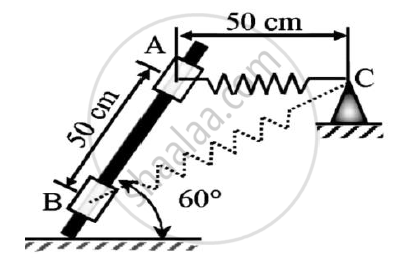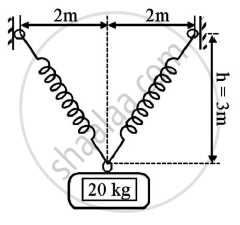Advertisements
Advertisements
A particle starts from rest from origin and it’s acceleration is given by a = `k/(x+4)^2 m⁄s^2`.Knowing that v = 4 m/s when x = 8m,find :
(1)Value of k
(2)Position when v = 4.5 m/s
Given : Particle starts from rest
a = `k/(x+4)^2 m⁄s^2`
v = 4m/s at x = 8m
To find : Value of k and position when v= 4.5m/s
Concept: Introduction to Basic Concepts
A 50 N collar slides without friction along a smooth and which is kept inclined at 60o to the horizontal.
The spring attached to the collar and the support C.The spring is unstretched when the roller is at A(AC is horizontal).
Determine the value of spring constant k given that the collar has a velocity of 2.5 m/s when it has moved 0.5 m along the rod as shown in the figure.

Concept: Principle of Work and Energy
b)A cylinder has a mass of 20kg and is released from rest when h=0 as shown in the figure.Determine its speed when h=3m.The springs have an unstretched length of 2 m.Take k=40 N/m.

Given : m=20 kg
h=0
k=40 N/m
To find : Speed when h=3m
Concept: Principle of Work and Energy
Just before they collide,two disk on a horizontal surface have velocities shown In figure.
Knowing that 90 N disk A rebounds to the left with a velocity of 1.8 m/s.Determine the rebound velocity of the 135 N disk B.Assume the impact is perfectly elastic.
Concept: Law of Conservation of Momentum
